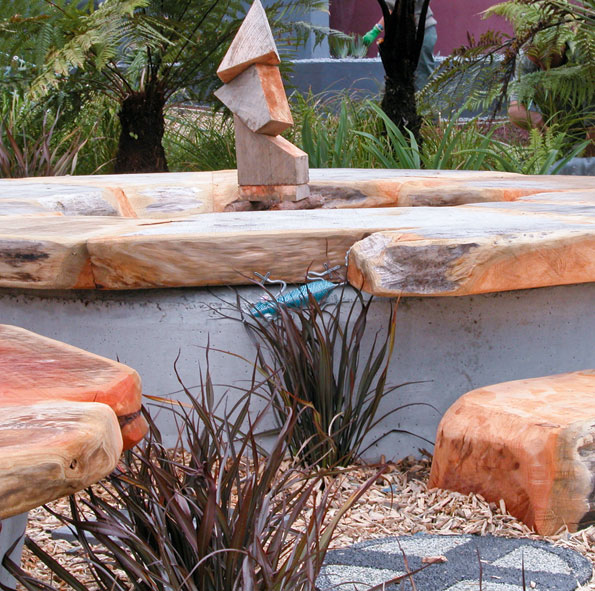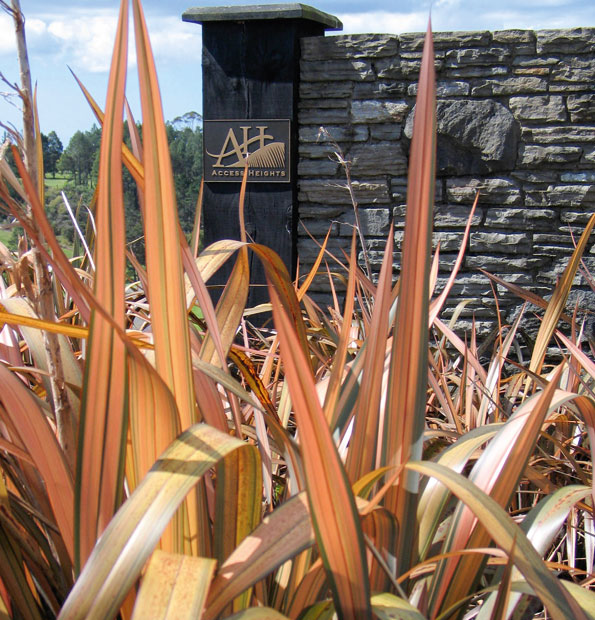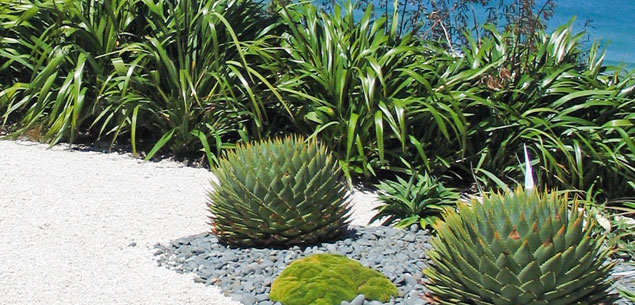Look behind our compost bin and you will find a secret stash of flax plants. The Partner brings them home from other people’s gardens in the hope that I’ll plant them. It doesn’t seem to have occurred to him that other people give them away because they don’t want them – and neither do I.
They look like anorexic sticks for a couple of years and then transform into spiky, ratty boring plants as big as the car. But I’ve softened a bit since The Partner took me for a drive and showed me a very long border of lush, healthy, graceful, weeping flax.

It was a double row, about 1200mm high, dark bronzy green, and it looked, if not fantastic, then at least tidy, useful and well-behaved.
I searched online to find exactly what sort of flax it was and discovered that the rejects behind the compost bin are not particularly typical of this iconic New Zealand plant.
It would be an exaggeration to say that I am now a flax-lover, but I have certainly been awakened to the possibilities and usefulness of various types of flax. Chosen carefully, they do have a contribution to make to the contemporary landscape.
If you like a well-designed garden, the first thing you need to know about flax is that it doesn’t have to be ratty and enormous. There are so many varieties available you can choose just about any size, shape, colour and habit you want. It certainly makes it an ideal plant for matching with existing architecture and hard landscaping. If you have a pink house, for example, finding a pink flax is not going to be a problem. You can just about specify the exact shade of pink and find one to match.

Flax is also hardy. It doesn’t mind the cold and the wind and a gale that will shred your banana palms won’t bother your flax nearly as much. Some are a bit susceptible but many seem windproof. This is possibly why, along with the cabbage tree, it’s become a bit of a darling on the international gardening scene.
Our eco-warrior mate gave us half a dozen tiny flaxes in pots a few years ago, and the fact that they now look like overweight, grey/green Volkswagens along the stream bank has all but ruined the friendship. They’re too big to pull out without a digger, otherwise they’d be residing behind his compost bin in a heartbeat.
But little flaxes that stay little are a different story. Small cultivars are ideal for mass planting and even middle-sized ones can look good in the right setting.
The colour palette is impressive – there’s cream, pink, bronze, purple, every shade of green and even a pale green and apple green stripe. Interestingly, it isn’t called Phormium Bedspread.
• Platt’s Black is a dark, plum colour and grows about a metre high.
• Surfer is bronze – of course – with twisted tips to its leaves, grows about 60cm x 60cm.
• Cream Delight (doesn’t it sound like an ice cream?) has a broad centre band of cream and a deep red edge.
• Jester is bright red with pink and green stripes.
• Phormium Chocomint is deep chocolate, edged with bright green and has an arching form.
• Compact, all-green cultivars such as Green Dwarf and Emerald Green will flower generously and only grow as big as baby buggies.
• Phormium Black Rage is black and weeping – sounds like me on a bad day. Despite its name, it doesn’t throw hissy fits and thrives happily in almost all New Zealand soil and climatic conditions.
• Phormium Emerald Gem Short (80cm) is a spiky dwarf that is a bold structural element in the garden.

Flax loves the sun, so plant it in full sun for healthy foliage and good colour. The Cookanium types like drier soil and the wind is not necessarily a disadvantage as it minimises pests such as mealy bug.
To keep flax tidy, cut old foliage off cleanly at the base with a sharp knife. Lift and divide every few years. Dig up the whole plant and whack it into sections. Replant the bits, water in well and give them a stylish haircut – a fan shape is the way to go. Could be a cool look for teenage lads.




